“Dormition of the Mother of God” Cathedral
The “Dormition of the Mother of God” Cathedral is the largest church in Varna and the second largest in Bulgaria. Situated in downtown Varna, it is among the symbols of our marine capital.
Clean waters, virgin places, wide beaches...
A bizarre place, with an abundance of natural beauty and history; a land saturated with sea salt and our ancient ancestors’ blood, where hundreds of rare plant and animal species are preserved. That would be the shortest possible description of the rich Bulgarian North Black Sea Coast, home to the mysterious Cape Kaliakra, the unique Durankulak Lake, the lighthouse at Cape Shabla - the oldest functioning one in the Balkans, the National archaeological reserve "Yailata", hundreds of caves.
Varna – often referred to as the marine capital of Bulgaria is the largest city in that part of the country. Primarily, the centuries-old city was known as Odessos. It is assumed that the settlement was founded in the 4th c. BC, but there are suggestions that it was inhabited much earlier. Back then it was among the most important ports and trade posts on the Black Sea coast. Pieces of the millennial history of the third largest city in Bulgaria are kept in the Archaeological Museum. The second largest temple in the country, after the Memorial Cathedral „St. Alexander Nevsky " is in Varna - the cathedral " St. Mary "(1883-1886); the longest bridge in Bulgaria as well – the two km. long “ Asparuhov bridge”. The “Sea Garden” where rare, valued and protected plants grow, is among the few artificial reserves in the country. The Dolphinarium, the Naval Museum, the Museum of history and medicine and dozens of other places keep and tell the story of the city,enriching the visitors, providing fun and entertainment.
The protected area of national importance “Durankulak” is in the farthest northeastern part of Bulgaria. At present, its inhabitants are exclusively very rare and endangered birds, but thousands of years ago it was inhabited by ancient people. On Big Island, a settlement mound dated to 4600 - 4200 BC remained from their fortified village - a cultural monument of national importance. Further into the island there’s a rock-hewn Hellenistic temple of the goddess Cybele. In Antiquity/In ancient/ times, there was a Thracian settlement on the territory of the modern-day town of Shabla and a Roman city afterwards. According to some reports, the lighthouse near Shabla is the oldest one in Europe, and the numerous oil wells around it, provide high in sulfur hot and healing mineral waters. The protected area "Shabla Lake" is nearby. The architectural reserve "Yailata” is not far either –with its numerous monuments from various ages and unique protected plant and animal species. Every year, the village of Kamen Bryag with its rocky coast attracts thousands of rock fanatics and hippies to Bulgaria for the celebration of July Morning. Another place best known for its nature and archaeological remains is Taukliman Bay that has the status of a reserve with caves, ruins of settlements, fortresses and a field of healing hydrogen sulfide at its bottom. Magical and mysterious the Kaliakra cape dives into the sea - a natural and archaeological reserve. There are still dolphins in the waters around it.
Balchik - one of the oldest European cities. In addition to its rich history, the city takes deep pride in the unique botanical garden-Architectural Park Complex -"The Palace" –Balchik, built as a summer residence of the Romanian Queen Maria Victoria de Edinburgh, and the numerous museums as well. Albena Resort Complex was once called the "Valley of Spring" by the Thracians, and for the Romans it was "Geranium" – meaning “health”. One of the most beautiful reserves in Bulgaria - "Baltata" is nearby as well. Another seaside resort - "Golden Sands", has a natural park, but “Kamchia” is not only resort, but biosphere reserve under the protection of UNESCO.
The waters at Shkorpilovtsi are perfect for surfing, windsurfing and kite. The "Kamchia Sands" reserve is pretty close, too. Byala is best known for its ancient history, not as being a seaside resort. The numerous remnants in the sea and on land are evidence of the glorious past.
The North Coast shores are unique with their pure waters, lack of many hotels and restaurants, pristine corners, wide beaches, caves, fresh air. The ideal place for an ultimate peaceful getaway.
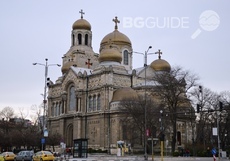
The “Dormition of the Mother of God” Cathedral is the largest church in Varna and the second largest in Bulgaria. Situated in downtown Varna, it is among the symbols of our marine capital.
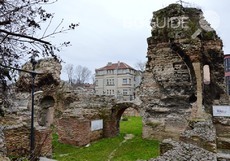
The Roman Thermae is the largest and relatively well-preserved Roman Bath on the Balkan Peninsula.
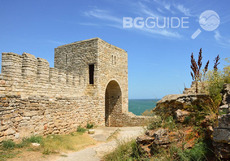
12 km southeast of Kavarna, Cape Kaliakra cuts into the waters of the Black Sea.
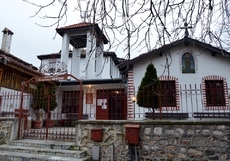
The small building of Varna’s Christian temple of St. Paraskeva is located in an area rich in thermal mineral waters and pagan sanctuaries of the distant past.
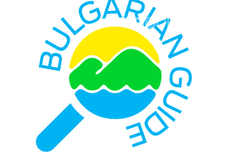
Part of the complex, the Botanical Garden is one of the most visited attractions in Balchik.

Православна църква в стария град на Несебър

The most famous representative of the magnificent Bulgarian medieval cave monasteries is the so called "Aladzha Monastery".